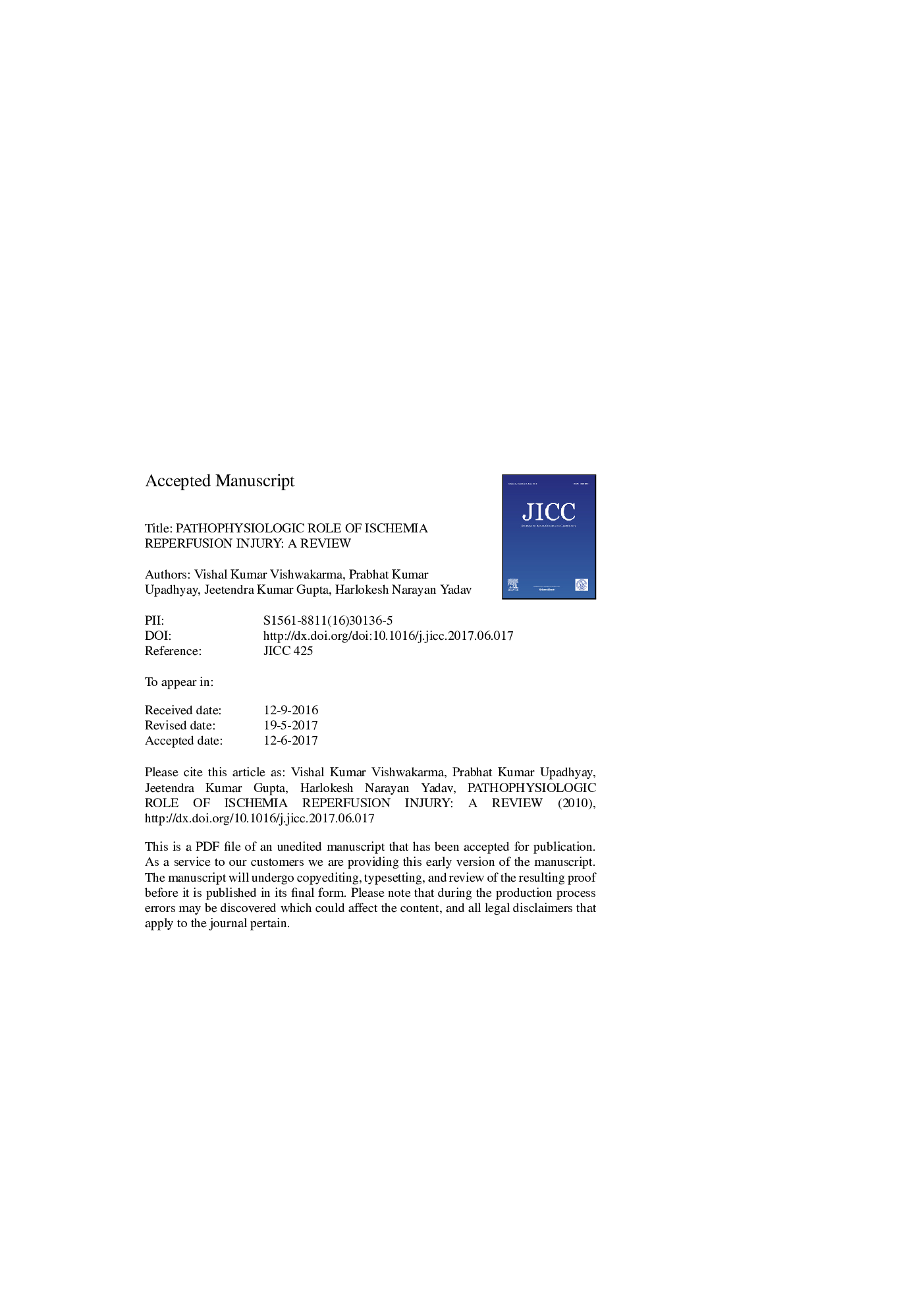| Article ID | Journal | Published Year | Pages | File Type |
|---|---|---|---|---|
| 5616070 | Journal of Indian College of Cardiology | 2017 | 29 Pages |
Abstract
Ischemic heart disease (IHD) is the major cause of morbidity and mortality all over the world. World health organization (WHO) in 2002 assumed that IHD may be the major leading cause of death by 2020. An estimated 17 million people died from cardiovascular diseases (CVS) globally. Of these deaths, 7 million people died by ischemia heart disease and 6.2 million by stroke. Ischemia is defined as an insufficient supply of the nutrient and oxygen to the cardiac muscle. During Ischemia, the level of glutathione, phosphocreatine and ATP are reduced and hypoxanthine level gets elevated. Altered ion distribution i.e. increase in intracellular Ca2+/Na2+, cellular swelling, cytoskeletan disorganization and acidosis of cells occur. During reperfusion, blood flow supply returns to the cardiac muscle that causes cellular edema, excess release of intracellular Ca2+ and damage to cell membrane. Cellular damage after reperfusion of previously viable ischemic tissues is known as ischemia-reperfusion (I/R) injury. It is associated with thrombolytic therapy, coronary angioplasty, organ transplantation and cardiopulmonary bypass that results in local and systemic inflammation. Therapeutic strategies to protect the ischemic myocardium have been studied extensively. Ischemia-reperfusion injury results in a local and systemic inflammatory response characterized by production of oxidative stress, leukocyte-endothelial cell adhesion, transendothelial leukocyte migration, increased microvascular permeability and decreased endothelium-dependent relaxation. Timely reperfusion of the ischemic area at risk remains the cornerstone of clinical practice. Therapeutic strategies such as ischemic preconditioning, controlled reperfusion, and anti-oxidant complement may significantly limit I/R-induced injury in humans. In this review, we have critically discussed the various mechanisms, methods and implication of ischemia reperfusion injury.
Related Topics
Health Sciences
Medicine and Dentistry
Cardiology and Cardiovascular Medicine
Authors
Vishal Kumar Vishwakarma, Prabhat Kumar Upadhyay, Jeetendra Kumar Gupta, Harlokesh Narayan Yadav,
